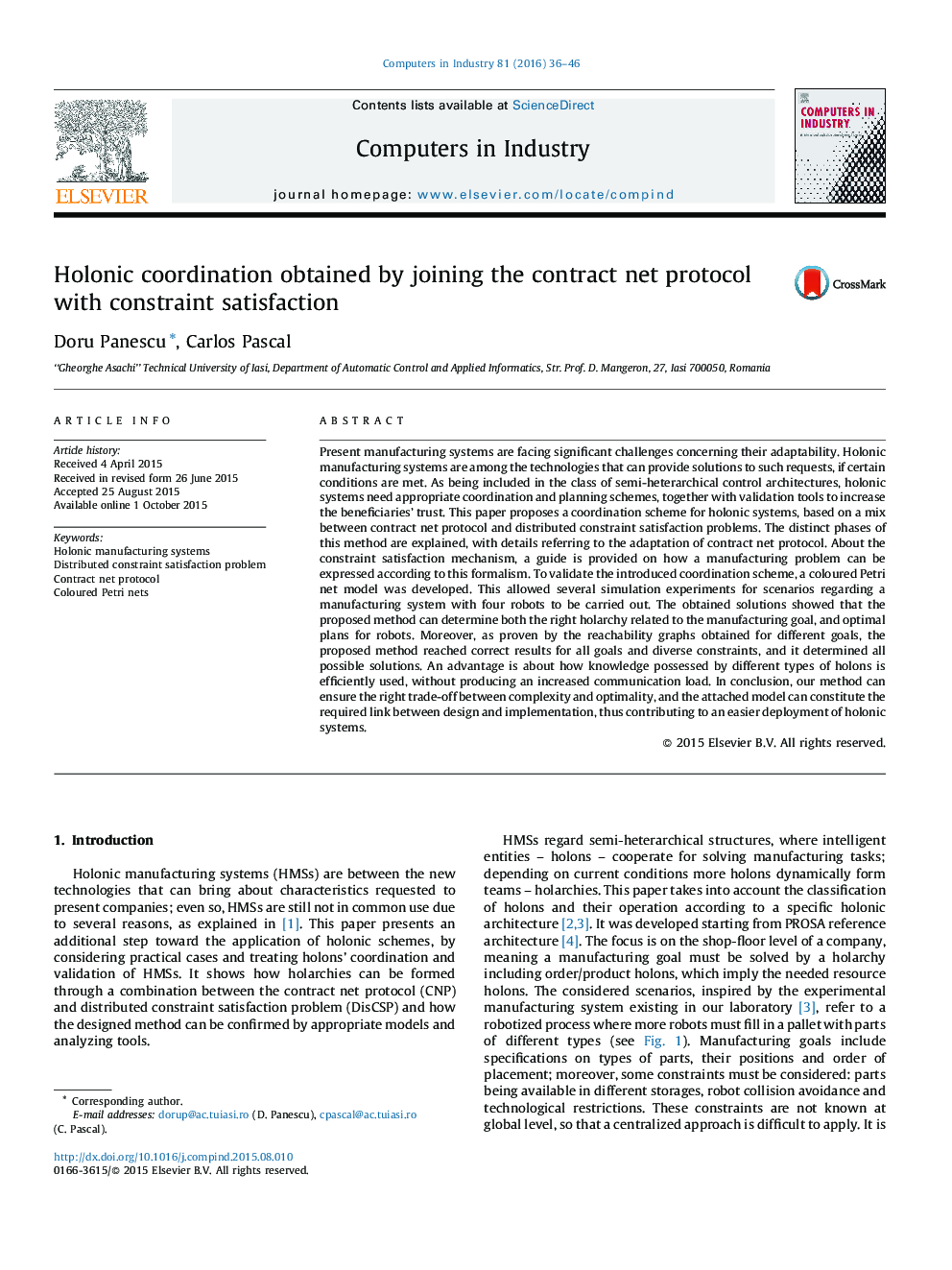| Article ID | Journal | Published Year | Pages | File Type |
|---|---|---|---|---|
| 508572 | Computers in Industry | 2016 | 11 Pages |
•A holonic coordination method combining contract net protocol and CSP is detailed.•A colored Petri net model allowing the validation of method is depicted.•A constraint satisfaction consistent encoding for manufacturing issues is described.•Results of simulation experiments for a robotic system prove the benefits of method.
Present manufacturing systems are facing significant challenges concerning their adaptability. Holonic manufacturing systems are among the technologies that can provide solutions to such requests, if certain conditions are met. As being included in the class of semi-heterarchical control architectures, holonic systems need appropriate coordination and planning schemes, together with validation tools to increase the beneficiaries’ trust. This paper proposes a coordination scheme for holonic systems, based on a mix between contract net protocol and distributed constraint satisfaction problems. The distinct phases of this method are explained, with details referring to the adaptation of contract net protocol. About the constraint satisfaction mechanism, a guide is provided on how a manufacturing problem can be expressed according to this formalism. To validate the introduced coordination scheme, a coloured Petri net model was developed. This allowed several simulation experiments for scenarios regarding a manufacturing system with four robots to be carried out. The obtained solutions showed that the proposed method can determine both the right holarchy related to the manufacturing goal, and optimal plans for robots. Moreover, as proven by the reachability graphs obtained for different goals, the proposed method reached correct results for all goals and diverse constraints, and it determined all possible solutions. An advantage is about how knowledge possessed by different types of holons is efficiently used, without producing an increased communication load. In conclusion, our method can ensure the right trade-off between complexity and optimality, and the attached model can constitute the required link between design and implementation, thus contributing to an easier deployment of holonic systems.
